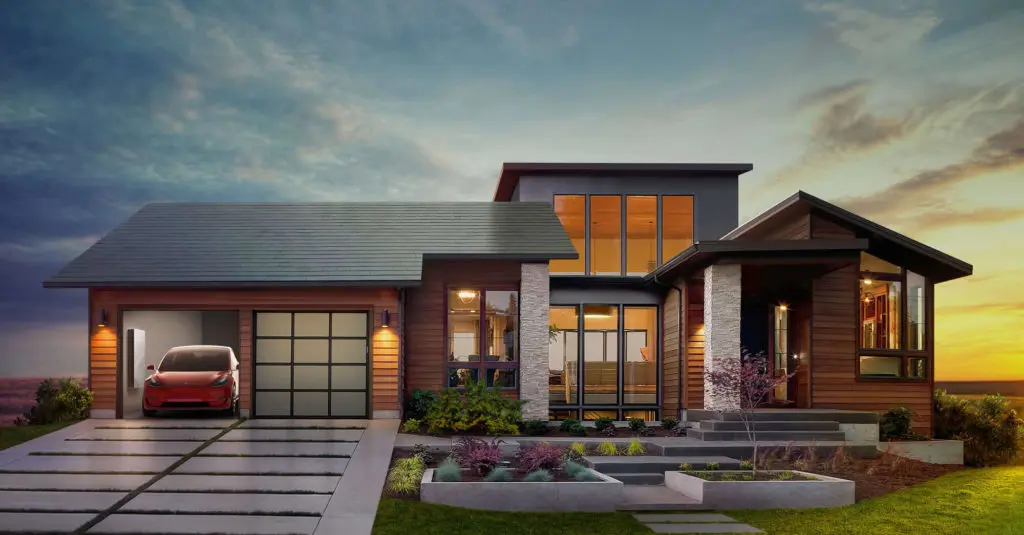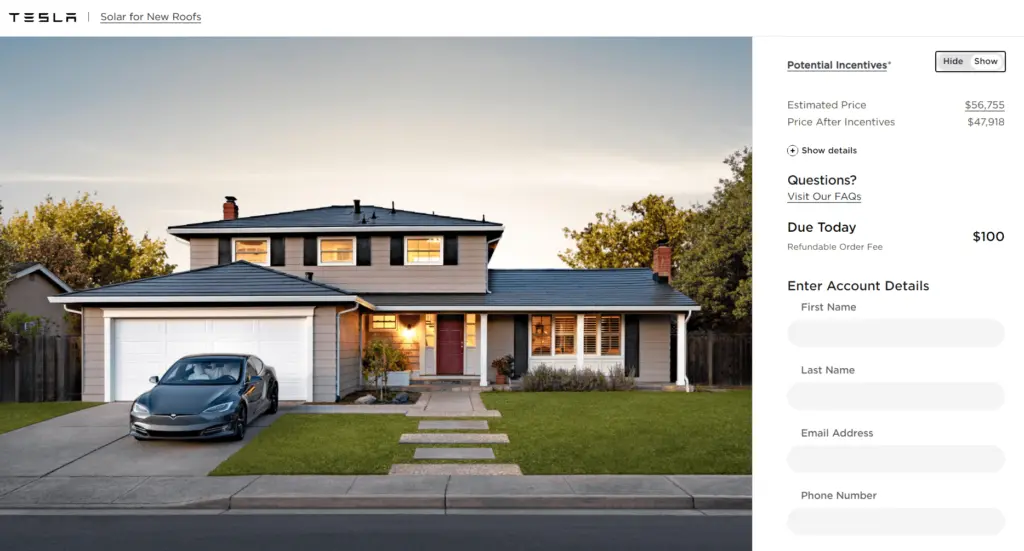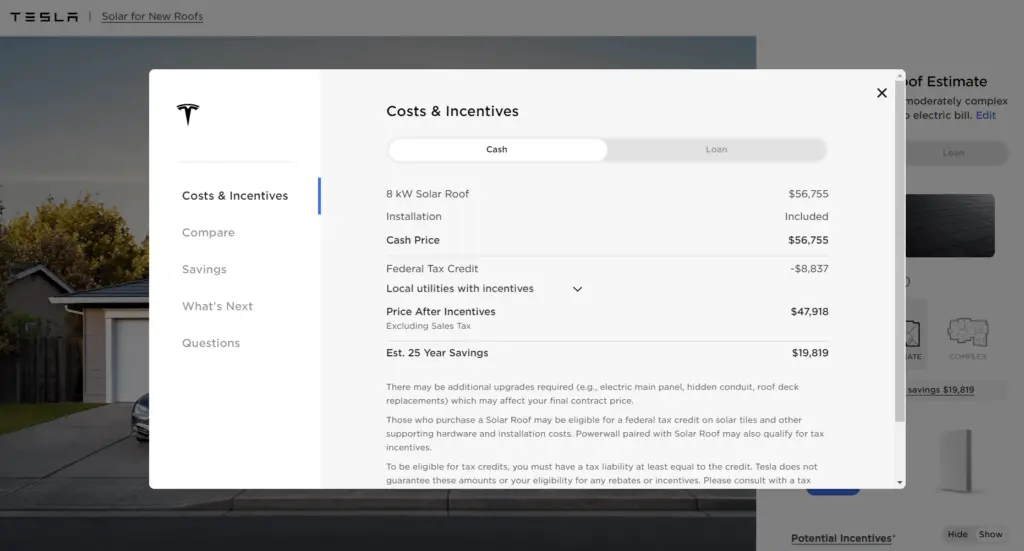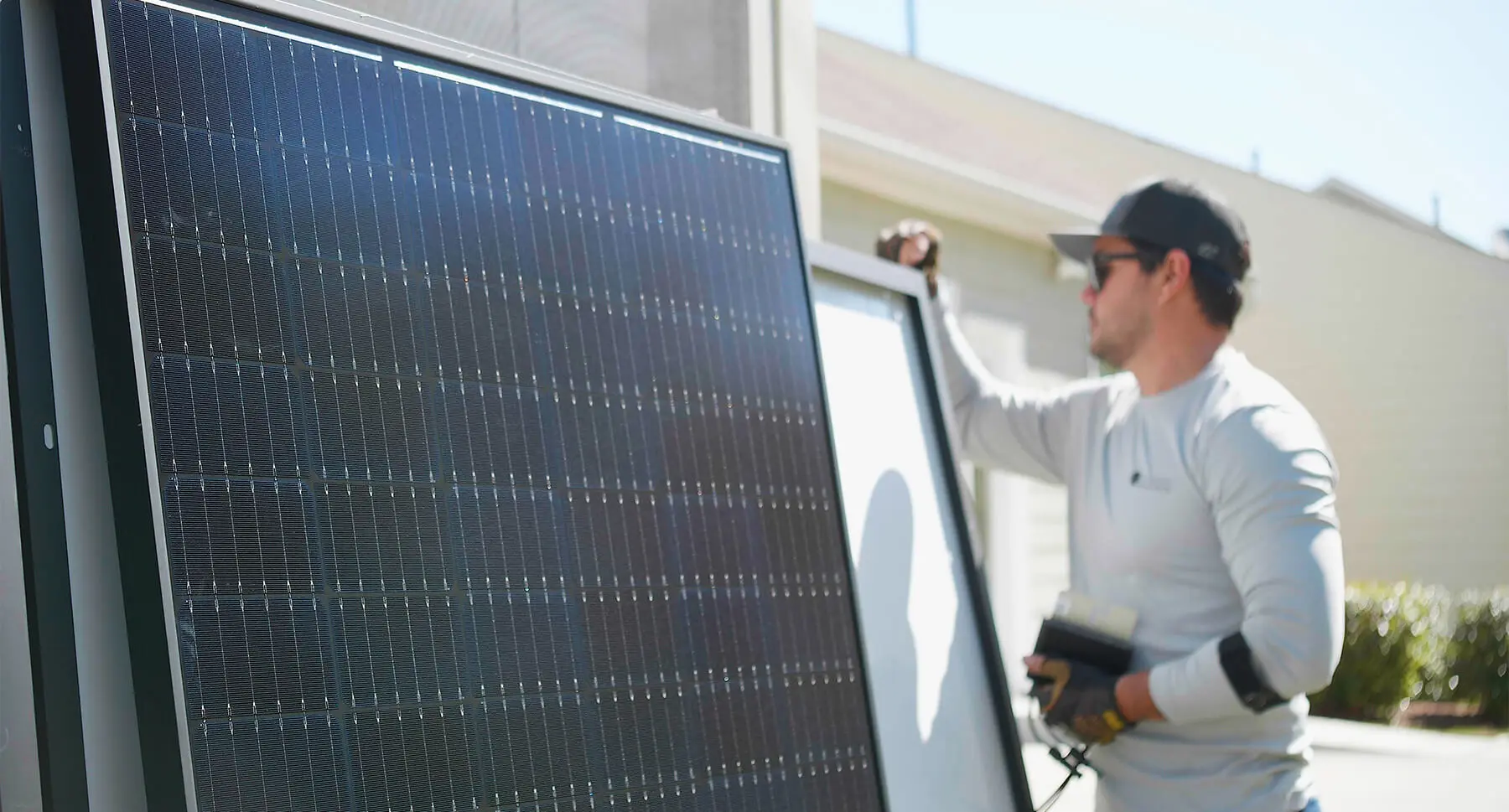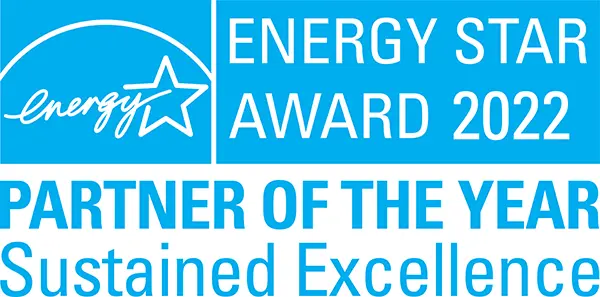The Tesla solar roof sounds like everything that our favorite 80’s era sci-fi novels and movies promised the future would bring. At Southern Energy Management, we’re just as excited about the Tesla solar roof as everyone else. And, as one of North Carolina’s select Certified Tesla Powerwall Installers, you can bet that we’ve got our eyes on all the latest news on Tesla solar shingles.
Quick Facts
- Tesla’s Solar Roof is awesome and we’re super excited about it
- Some installers are beginning to offer the solar roof in NC
- Tesla’s Solar Roof is much more complex and will cost 40-100% more than traditional solar panels
One of the big questions, though, is “When will Tesla’s Solar Roof be available?” The short answer is that Tesla’s solar shingle product is still in the very early stages of launching on the East Coast.
Since Tesla’s solar shingle system is so new, especially in North Carolina, and because the pricing and energy savings for the roof are unclear, our stance is that if you’re interested in going solar in the next 5 years, your best option is going to be the tried-and-true panel technology that has been tested and continually improved since the 1970s. In the rest of this post, we’ll dive deeper into our reasons for that opinion so you can decide for yourself. But first, let’s make sure we’re on the same page about what the solar roof is.
What is the Tesla Solar Roof?
Tesla’s Solar Roof is made up of photovoltaic cells integrated into shingles. Tesla is not the first company to launch a solar shingle – we installed some of Dow’s now discontinued solar shingles in 2014 – but they’re definitely the sexiest attempt to date. Solar shingles function in the same way as traditional solar panels: photovoltaic cells convert photons from the sun’s rays into electricity.
A solar roof consists of both active and passive shingles. The active shingles do the actual work of producing energy for your home. The passive shingles are used on areas of your roof that aren’t suitable for the active cells – either because of building regulations or lack of solar potential – to maintain a uniform appearance.
Previously, there was talk of 4 solar shingle styles: Tuscan, Slate, Textured, and Smooth Glass. As of now, Tesla is only advertising a shingle that appears most like the Textured Glass option.

Tesla Solar Shingle Specs
Tesla’s solar shingles are a sleek, slate grey at 15”x45” and come with a 25 year tile, power, and weatherization warranty. The tiles have an ASTM D3161 Class F wind rating, and a ANSI FM 4473 Class 3 hail rating. That’s all fancy jargon to say the tiles are tested to hold up to 110mph winds and 1 ¾ inch hail.
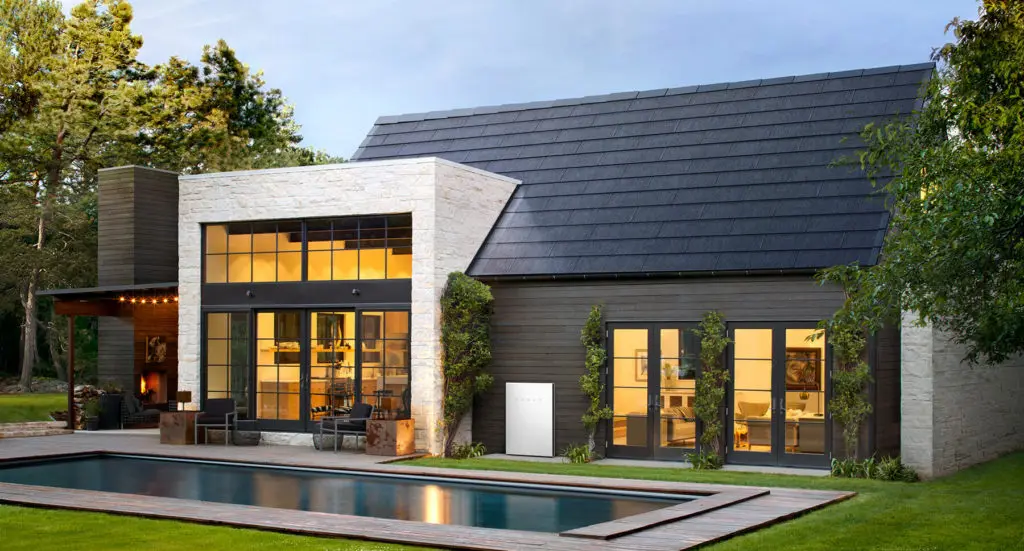
When will the Tesla solar roof arrive in North Carolina?
A few installers have started to offer Tesla’s solar roof in North Carolina. Right now, NC homeowners who are getting solar shingles installed are paying a price premium to be in the front of the line.
As a Certified Tesla Powerwall Installer, we’ve talked with Tesla about the solar roof and previewed the product. At this point, we’re continuing to offer Tesla’s traditional PV panels, but not their shingle roof material. We love the Poweralls, solar panels, and solutions Tesla continues to put out, but since their solar roof product is still so new, with such complex technology behind it, we don’t want our customers to be first in line to experience the kinks of a first generation product. We know the Tesla solar roof is going to be a game changer and we’ll be on board as soon as we feel that this product has proven long term success for our customers.
If getting Tesla’s solar roof is make or break for you on your solar journey, we have good news — there are other solar companies in NC that have taken on rolling out this product! Tesla is also currently taking $100 refundable deposits to hold your place in line through their online ordering portal. That being said, there is no guarantee for when your solar roof will be installed (or by which contracted installer).
Solar Roof vs Solar Panels
There are two major differences between a solar roof and a traditional solar panel system — complexity and price.
Talk with any roofer or solar company that has worked with the solar shingle product, we’ll bet they’ll tell you that the Tesla solar roof is one of the most complex and intricate roofing systems that they have ever seen. An average 8kw solar roof will have around 460 solar shingles, which means there are 460 wiring connection points on your roof (or 460 possible break points). On the other hand, a traditional solar system for this size will include around 25 solar panels, meaning 25 connections.
With a traditional solar system, you can also get panel level solar monitoring so you would know exactly when a panel is underperforming while being able to pinpoint exactly where the problem is in your system. This level of monitoring just isn’t available yet for the solar roof, making it a challenge to quickly address any issues when they come up.
Next on the list is price. Tesla’s Solar Roof website has a slick calculator that takes your address and uses Google’s Project Sunroof to automatically generate a Solar Roof solution for your home. While the tool is fun to play with, the prices and energy savings it estimates don’t impress us when compared to traditional solar panels. Let’s take a deeper dive into price differences between the Tesla Solar roof and traditional solar panels.

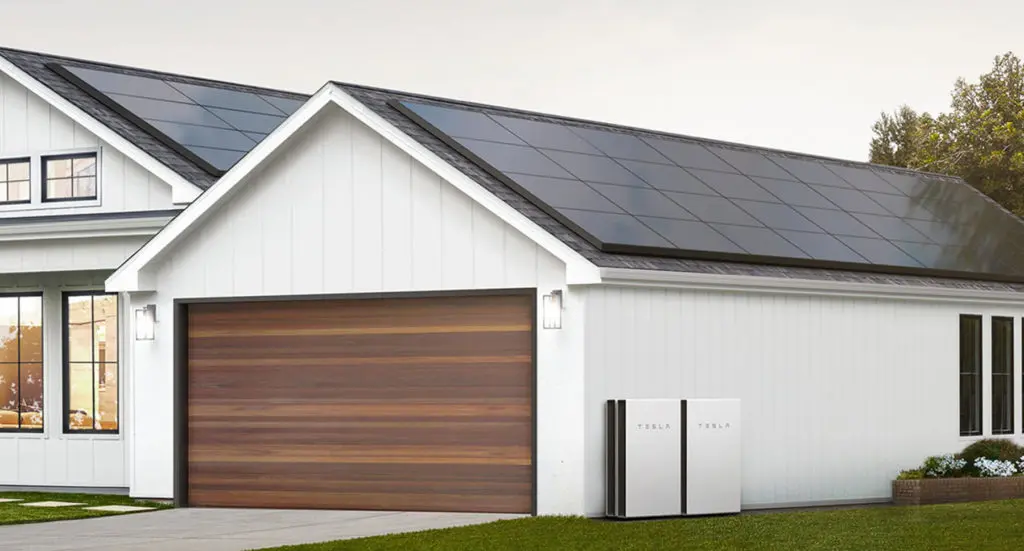
Pricing: Solar Roof vs Solar Panels
You may have seen headlines that Tesla drastically increased their solar roof price. We’ve also been playing around with their online solar quote tool and will walk through an example of Tesla solar roof pricing vs a traditional solar system below. Upfront disclaimer — Based on the nature of Tesla’s solar quote tool, it is difficult to illustrate an apples-to-apples price/savings comparison, we’re in more of an apples-to-crabapples comparison here.
So, let’s start with what we do know. Our average home solar system size from 2021 is 8 kilowatts (kW) with a turn-key cost around $25,000 before incentives. That 8 kW system will generate approximately 11,000 kilowatt hours (kWh) of electricity per year, saving its owner around $1,040 annually or $86 per month.
These estimates are specific to North Carolina taking our local utility rates, state solar production potential, and estimated rise in utility cost into account. To learn more about these factors, check out our blog on what to watch out for on a solar proposal.
| Traditional Solar System | Tesla Solar Roof | |
|---|---|---|
| System Size | 8kW | 8kW |
| Annual Production (kWh) | 11,000kWh | 12,087kWh |
| Total Cost (Before Incentives) | $25,000 | $56,755 |
| Annual Savings | $1,040 | $2,112 |
| Monthly Savings | $86 | $176 |
When we built a solar roof sized to 8kW in Tesla’s online solar roof design tool, Tesla listed the price as $56,755 before incentives, generating 12,087kWh per year, and saving its owner $2,112 annually or $176 per month. While we did have to game Tesla’s system to reach the same 8 kW solar size by tweaking the monthly electric bill cost, there are a few issues with how Tesla has calculated production and savings.
In North Carolina, we expect a solar system to produce around 1,300 kWh per kW each year. For the perfect solar system in North Carolina — facing due South, tilted to 35 degrees, and no shading — the maximum production we’d expect to see is 1,450 kWh per kW annually.
Based on that math, Tesla’s annual production estimate comes in high at 1,510 kWh per kW (12,087 kWh / 8 kW). This is quite a bit beyond what we would expect a North Carolina solar system could produce based on the available sun exposure we have here.
With an overly ambitious production value, geared more toward California skies, the savings benefits in Tesla’s equation are also skewed. The annual savings of over $2,000 from 12,087 kWh produced is simply incorrect for the cost of electricity in NC of between $0.09 and $0.13 per kWh.
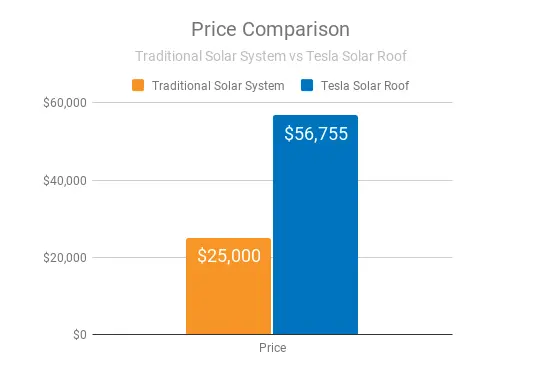
Bottom line is that it’s really important to be sure your system is going to be properly sized specific to your home and energy needs. We build all of those factors into our turnkey system price starting from Day 1 by taking a good look at your roof during your site analysis and by using your energy needs as a guide post to designing a spectacular solar system fit for your home.
From speaking with others, we’ve heard that Tesla takes your home’s details like shading and actual roof structure into account much further down the solar process. These details become costly change orders, increasing the price of your solar roof. This means the price Tesla spits out on their online cost estimator is really just a starting point with lots of potential for upcharges once they actually get a look at your home.
When it comes down to it, based on these numbers, for an average 8 kW solar system Tesla’s solar roof is over twice as expensive as a traditional solar install. Although, Tesla does make bold claims with a higher estimated production value and double the savings for the same system size, we’re not sure this is a realistic assumption based on NC skies.
Pricing: Solar Roof vs Traditional Roof
We can’t ignore the fact that the solar roof is a complete roof replacement. So if you happen to need a new roof at the same time you go solar, you can subtract the cost of a traditional roof from the price of your Solar Roof to calculate your net cost. Tesla suggested a traditional roof cost of $18,549 for the solar roof system we built using their calculator, which is a very high roof replacement cost in NC. (We’re guessing this would likely be for a 4,000 sq ft or larger home with complex roof lines.)
Nevertheless, for comparison’s sake, removing the cost of roof replacement from the solar roof price would leave you with a $38,206 solar system in this scenario – still a 53% price premium over traditional panels.
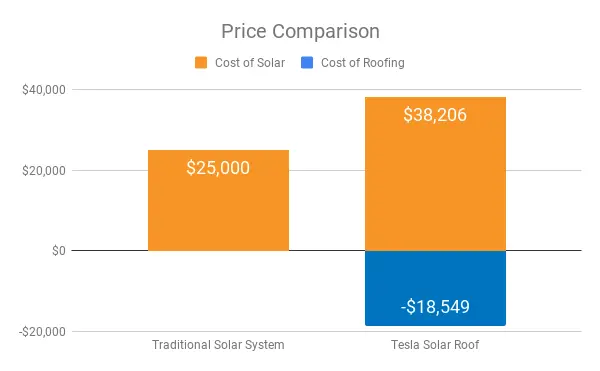
Should You Pre-Order the Tesla Solar Roof?
Our current answer? Probably not.
Most people who will spend $20-$60k want to make sure it’s a valuable purchase for their needs today and into the future. We’re confident that in the years to come, the Tesla Solar Roof will blow us away – just like many of the other things Tesla and Elon Musk have done. But because Tesla’s solar shingles are still so new to the East Coast and the price is currently 40-100% higher than a traditional solar panel system, we don’t believe the solar roof is your best option for going solar now or in the next few years.
Our advice is that if you want to go solar in the near future for money savings or energy independence, you should stick with traditional solar panels and take advantage of the current solar incentives while they last. Traditional home solar panel prices are at an all time low and thanks to the Federal Tax Credit, solar in North Carolina has never been a better deal.
For updates on Tesla’s Solar Roof and to stay on top of solar news in North Carolina, subscribe to our newsletter below in our footer. If you’re interested in seeing how solar could work for you today, request a free solar evaluation – we can always save your roof measurements if you opt to wait for the Tesla Solar Roof.
Top 17 Powerwall Questions Answered
Ready to Get Started?
Schedule a free assessment to learn more about solar power & battery storage for your home.
About Us
North Carolina’s solar power and building performance expert. Founded in 2001, we’ve worked for 20+ years to improve the way people make and use energy.
© 2023 Southern Energy Management, Inc.

